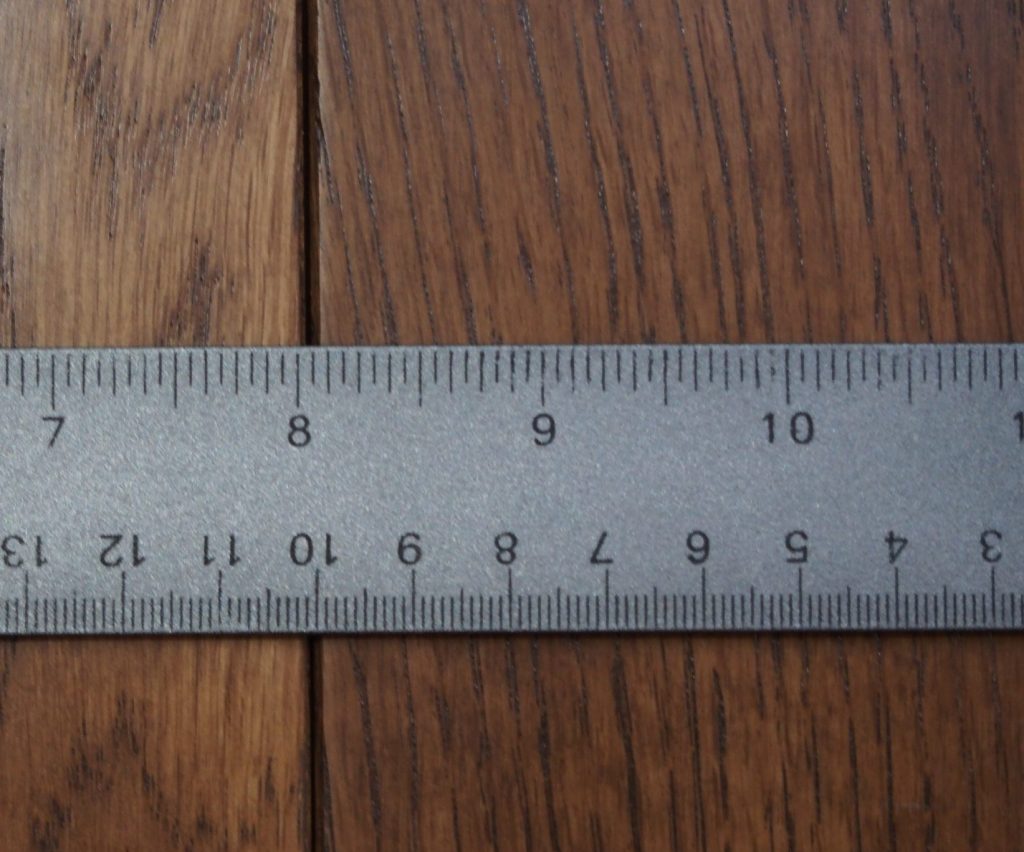It’s that time of the year where we close our windows and turn on the heat. Did you think about how the climate change may affect your hardwood floors? Seasonal gaps are common but you want to make sure your wood floors are properly maintained during these climate changes.
Wood is a hygroscopic material, which means when exposed to air, it will dry or pick up moisture until the wood is in equilibrium with the moisture content of the air. Even though the wood has been cut, dried and processed to make premium hardwood flooring, it is still a living material that changes with the environment. Therefore, wood floors can react to the temperature and humidity changes in your home. Be aware that hardwood floors do not like sudden change but there are ways you can prevent damage being done.
Separations Between Boards
When you turn the heat on the air becomes very dry and the humidity goes down significantly. Hardwood flooring can contract due to low levels of relative humidity (RH), homeowners may notice gaps between the wood planks. To make sure this doesn’t happen to your floor, low humidity can be controlled with a humidifier. This is typically mounted to a furnace in modern forced air homes. In larger homes, a steam humidification system may be required, which adds steam humidity to the house regardless of whether the furnace is running or not.
The required temperature in your home should be 60-80 degrees year round with a humidity range of 35-55 percent.
Do not be alarmed if you see minor gaps since this is common with solid wood floors during the seasonal change. Gaps can be the thickness of a dime (1/32 inch) or wider for solid 2 1/4 inch floors. Wider plank floors can have even wider gaps. Also, note that light-colored floors tend to show gaps more than dark floors.
Wood Options
Although all premium hardwood flooring reacts to RH in the air, some species and cuts tend to have a smaller degree of change. Boards that are narrower tend to shrink less for a given change in moisture content in comparison to wider boards. As an example, a 4-inch wide plank will shrink twice as much as a 2-inch board. Therefore, the size of the gap between the boards that are 4-inches will be twice as big as the gap between the 2-inch board. The more joints in a board, the more places gapping is distributed.
Some species of wood are more dimensionally stable than other species. For example, for a given change in moisture content, Hickory tends to shrink more than Red Oak would. Using a wood with a smaller dimensional change will decrease the amount of gapping during the winter. The U.S Forest Services publishes dimensional change for different species. Along the same line as dimensional stability, quarter sawn wood flooring shrinks about half as much compared to plain sawn flooring for the same amount of moisture. As a result, under the same moisture, quarter sawn flooring will produce smaller gaps than plain sawn flooring.
For further information on humidity, give us a call and one of our flooring experts will help. In addition, you can read more in the NWFA technical article on Moisture and Wood.
Remember, your hardwood floors are still alive and need to live within a specific temperature and humidity range.

